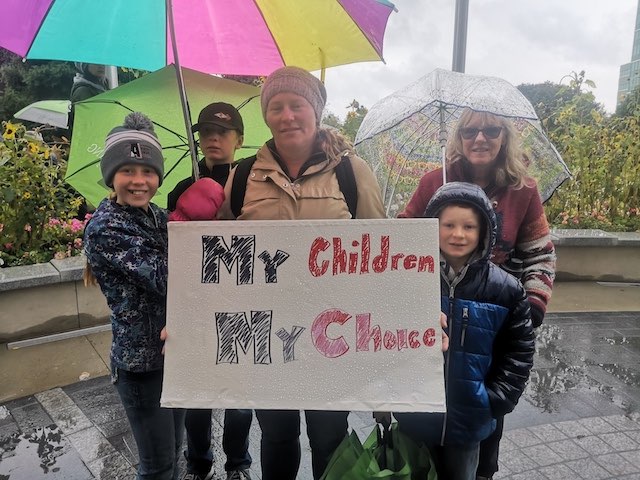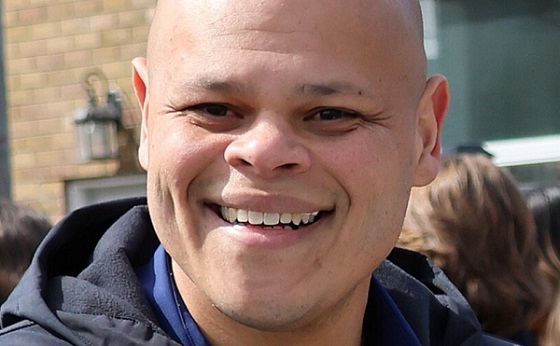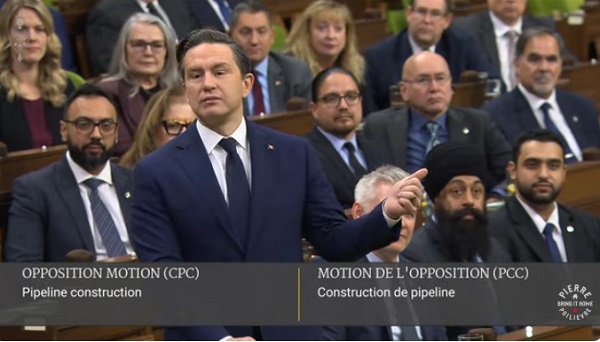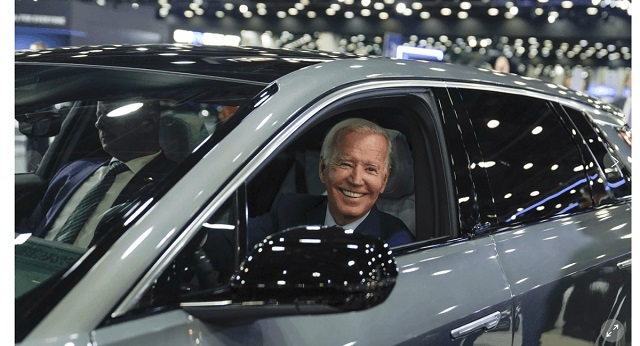Opinion
1 Million March 4 Children announces second event Saturday, Oct 21 – How should we feel about this?




- These protests are supported by a big tent of far-right and conspiratorial groups, including Christian Nationalists, COVID-19 conspiracy theorists, sovereign citizens, and anti-public education activists.
Sounds dangerous. Far-right and conspiratorial groups, Christian Nationalists, COVID-19 conspiracy theorists, sovereign citizens, all mixing it up with anti-public education activists. No wonder I was afraid to go at first! Good thing I don’t depend on the AntiHate.ca website to plan my outings.
Come to think of it I’ve got a couple of questions for AntiHate.ca.
1) Are Christian Nationalists ‘far-right’ or ‘conspiratorial’? Can they be just Christians who like their country a lot? If not, what do we call Christians who like Canada? Just wondering.
2) Are the COVID-19 ‘conspiracy theorists’ the ones who correctly (if annoyingly) warned the lock downs / masks / 1, 2, 3, 4 doses of vaccine would not stop the pandemic? or were they the ones who incorrectly believed all those things would bring that pandemic to an end? Can you see how that could be confusing in 2o23?
3) I didn’t know I had to be afraid of sovereign citizens and anti-public education activists. Can I let my children out of the house while they still exist in Canada?
It’s important there are groups like AntiHate.ca. It’s important Canadians always remember that no matter how much we disagree, almost every single person wants to live their lives in freedom and simply enjoy opportunities. When we descend into hatred, we take society down with us. So thank you AntiHate.ca for watching out for us.
Were there incidents at hate at the 1 Million March 4 Children? AntiHate.ca found some examples. I did not see or hear of any incidents at the Red Deer event. Part of the credit goes to the police. They did a wonderful job of patrolling between the opposing sides in a very relaxed and friendly manner that certainly calmed the tension people would otherwise have felt.


Standing on the sidewalk as protestors streamed past me, I was struck by how different the 1 Million March 4 Children felt compared to other protests I’ve attended.
This was a protest of families. There were pregnant women, new mothers and fathers with their young children, and lots of grandparents. It also featured an intriguing and beautiful mixture of cultures. As protestors strolled past I was reminded of that feeling you get from the multi-cultural festivals that mark so many Canada Day Celebrations.




Fact: On September 20, 2023 a vast array of Canadians representing many cultures and beliefs united at Red Deer’s City Hall Park for the 1 Million March 4 Children.
But: Unlike Canada Day, it felt a little bit like we were going to get in trouble just for being here. Maybe that’s why very few politicians dared to come out in support of this group. I did see Red Deer South MLA Jason Stephan and Red Deer Catholic School Board Member Monique LaGrange. Jason has never been frightened of zagging where other politicians are zigging. As for Monique, she’s been disciplined for expressing her opinion recently and probably felt she had nothing more to lose by being associated with the people AntiHate.ca is warning us about.
Canada’s Prime Minister is convinced the people streaming past me were “phobs”… Transphobs, homophobs, and biphobs (I think he may have invented the last one just as he was writing the post below). According to our Prime Minister hundreds of Central Albertans and the tens or hundreds of thousands of Canadians who gathered on September 20 were there to ‘manifest their hatred’ of 2SLGBTQI+ people. Here’s Trudeau’s post on X.

The Muslim Association of Canada strongly condemned Trudeau’s remarks and called for an apology that has yet to make it’s way into the line up of apologies PM Trudeau seems to make on a daily basis. Here’s part of their statement.
- By characterizing the peaceful protests of thousands of concerned parents as hateful, Canadian leaders and school boards are setting a dangerous precedent of using their position of influence to unjustly demonize families, and alienate countless students.
- On Wednesday September 20th, thousands of Muslims, joined by other faith-based groups, protested to raise their concerns, calling for their rights as parents in relation to their children’s education. Their intent was to be heard, not to sow division. Parents should have the absolute right to advocate for the wellbeing of their children.
As I streamed through my social media feeds last week I could see some of my friends (who I did not see at the protest or counter protest) apparently agree with Trudeau. The most common post was the “no space for hate” meme which is really a beautiful message even if it might be a bit too sarcastic when aimed at the vast majority of those who marched. (I’m OK with sarcasm. I think my family may have invented it.)

By using the word ‘hate’ they seem to be implying the protestors are hateful. Maybe they can come to the next march in October to see for themselves. I did not see messages of hate from the protestors OR from the counter protestors in Red Deer. You can see excellent examples of the signage from both sides in the photos below which show the signs on opposite sides of the street (and the debate).


On top of the signs there were also competing slogans. Chants of “Leave our kids alone” from the protestors were so loud it was a bit difficult to hear the opposing chant. I thought I heard “I was born like this” from the counter protestors.
I heard another chant from the protest organizer on his megaphone. “Don’t interact with the counter protestors. They have a right to be here too.” All in all the Red Deer protest was a bit loud, but far more civilized than advertised. I guess it felt a little bit like democracy is supposed to feel like.
As the protest ended I even witnessed one protestor walk up to a group of 5 or 6 counter protestors. He said (I’m paraphrasing) “I may not agree with you about much, but I respect your right to be here and I just wanted to say thank you for expressing your opinions peacefully.” That was quite a moment for the counter protestors who all looked relieved as they were likely expecting a confrontation. I admit I was stunned. It caught me by surprise and I was unable to get a photo or video in time.
As I looked through the protest signs and briefly chatted with people streaming past me it was clear there was one overwhelming message. The protestors clearly want to be the ones to teach their children about gender ideology. Others are far more concerned about the idea that schools would be keeping secrets with students from their parents who pay the taxes that support the whole system.


I leave the final words to Tim Hoven. Tim is a politically active Central Albertan who tried to take on his local UCP MLA Jason Nixon in a nomination and then ran unsuccessfully as an Independent candidate against him when his nomination was disqualified. Hoven was the local organizer and the main speaker at the Red Deer version of 1 Million March 4 Children.
Censorship Industrial Complex
Ottawa’s New Hate Law Goes Too Far

From the Frontier Centre for Public Policy
By Lee Harding
Ottawa says Bill C-9 fights hate. Critics say it turns ordinary disagreement into a potential crime.
Discriminatory hate is not a good thing. Neither, however, is the latest bill by the federal Liberal government meant to fight it. Civil liberties organizations and conservative commentators warn that Bill C-9 could do more to chill legitimate speech than curb actual hate.
Bill C-9 creates a new offence allowing up to life imprisonment for acts motivated by hatred against identifiable groups. It also creates new crimes for intimidation or obstruction near places of worship or community buildings used by identifiable groups. The bill adds a new hate propaganda offence for displaying terrorism or hate symbols.
The Canadian Civil Liberties Association (CCLA) warns the legislation “risks criminalizing some forms of protected speech and peaceful protest—two cornerstones of a free and democratic society—around tens of thousands of community gathering spaces in Canada.” The CCLA sees no need to add to existing hate laws.
Bill C-9 also removes the requirement that the Attorney General consent to lay charges for existing hate propaganda offences. The Canadian Constitution Foundation (CCF) calls this a major flaw, noting it removes “an important safeguard for freedom of expression that has been part of Canada’s law for decades.” Without that safeguard, decisions to prosecute may depend more on local political pressures and less on consistent national standards.
Strange as it sounds, hatred just will not be what it used to be if this legislation passes. The core problem begins with how the bill redefines the term itself.
Previously, the Supreme Court of Canada said hatred requires “extreme manifestations” of detestation or vilification that involve destruction, abhorrence or portraying groups as subhuman or innately evil. Instead, Bill C-9 defines hatred as “detestation or vilification,” stronger than “disdain or dislike.” That is a notably lower threshold. This shift means that ordinary political disagreement or sharp criticism could now be treated as criminal hatred, putting a wide range of protected expression at real risk.
The bill also punishes a hateful motivation more than the underlying crime. For example, if a criminal conviction prompted a sentence of two years to less than five years, a hateful motivation would add as much as an additional five years of jail time.
On paper, most Canadians may assume they will never be affected by these offences. In practice, the definition of “hate” is already stretched far beyond genuine threats or violence.
Two years ago, the 1 Million March for Children took place across Canada to protest the teaching of transgender concepts to schoolchildren, especially the very young. Although such opposition is a valid position, unions, LGBT advocates and even Newfoundland and Labrador Conservatives adopted the “No Space For Hate” slogan in response to the march. That label now gets applied far beyond real extremism.
Public pressure also shapes how police respond to protests. If citizens with traditional values protest a drag queen story hour near a public library, attendees may demand that police lay charges and accuse officers of implicit hatred if they refuse. The practical result is clear: officers may feel institutional pressure to lay charges to avoid being accused of bias, regardless of whether any genuine threat or harm occurred.
Police, some of whom take part in Pride week or work in stations decorated with rainbow colours in June, may be wary of appearing insensitive or intolerant. There have also been cases where residents involved in home invasion incidents were charged, and courts later determined whether excessive force was used. In a similar way, officers may lay charges first and allow the courts to sort out whether a protest crossed a line. Identity-related considerations are included in many workplace “sensitivity training” programs, and these broader cultural trends may influence how such situations are viewed. In practice, this could mean that protests viewed as ideologically unfashionable face a higher risk of criminal sanction than those aligned with current political priorities.
If a demonstrator is charged and convicted for hate, the Liberal government could present the prosecution as a matter for the justice system rather than political discretion. It may say, “It was never our choice to charge or convict these people. The system is doing its job. We must fight hate everywhere.”
Provincial governments that support prosecution will be shielded by the inability to show discretion, while those that would prefer to let matters drop will be unable to intervene. Either way, the bill could increase tensions between Ottawa and the provinces. This could effectively centralize political authority over hate-related prosecutions in Ottawa, regardless of regional differences in values or enforcement priorities.
The bill also raises concerns about how symbols are interpreted. While most Canadians would associate the term “hate symbol” with a swastika, some have linked Canada’s former flag to extremism. The Canadian Anti-Hate Network did so in 2022 in an educational resource entitled “Confronting and preventing hate in Canadian schools.”
The flag, last used nationally in 1965, was listed under “hate-promoting symbols” for its alleged use by the “alt-right/Canada First movement” to recall when Canada was predominantly white. “Its usage in modern times is an indicator of hate-promoting beliefs,” the resource insisted. If a historic Canadian symbol can be reclassified this easily, it shows how subjective and unstable the definition of a “hate symbol” could become under this bill.
These trends suggest the legislation jeopardizes not only symbols associated with Canada’s past, but also the values that supported open debate and free expression. Taken together, these changes do not merely target hateful behaviour. They create a legal framework that can be stretched to police dissent and suppress unpopular viewpoints. Rest in peace, free speech.
Lee Harding is a research fellow for the Frontier Centre for Public Policy.
Daily Caller
US Supreme Court Has Chance To End Climate Lawfare


From the Daily Caller News Foundation
All eyes will be on the Supreme Court later this week when the justices conference on Friday to decide whether to grant a petition for writ of certiorari on a high-stakes climate lawsuit out of Colorado. The case is a part of the long-running lawfare campaign seeking to extract billions of dollars in jury awards from oil companies on claims of nebulous damages caused by carbon emissions.
In Suncor Energy (U.S.A.) Inc., et al. v. County Commissioners of Boulder County, major American energy companies are asking the Supreme Court to decide whether federal law precludes state law nuisance claims targeting interstate and global emissions. This comes as the City and County of Boulder, Colo. sued a long list of energy companies under Colorado state nuisance law for alleged impacts from global climate change.
The Colorado Supreme Court allowed a lower state trial court decision to go through, improbably finding that federal law did not preempt state law claims. The central question hangs on whether the federal Clean Air Act (CAA) preempts state common law public nuisance claims related to the regulation of carbon emissions. In this case, as in at least 10 other cases that have been decided in favor of the defendant companies, the CAA clearly does preempt Colorado law. It seems inevitable that the Supreme Court, if it grants the cert petition, would make the same ruling.
Dear Readers:
As a nonprofit, we are dependent on the generosity of our readers.
Please consider making a small donation of any amount here.
Thank you!
Such a finding by the Supreme Court would reinforce a 2021 ruling by the Second Circuit Appeals Court that also upheld this longstanding principle of federal law. In City of New York v. Chevron Corp. (2021), the Second Circuit ruled that municipalities may not use state tort law to hold multinational companies liable for climate damages, since global warming is a uniquely international concern that touches upon issues of federalism and foreign policy. Consequently, the court called for the explicit application of federal common law, with the CAA granting the Environmental Protection Agency – not federal courts – the authority to regulate domestic greenhouse gas emissions. This Supreme Court, with its 6-3 conservative majority, should weigh in here and find in the same way.
Boulder-associated attorneys have become increasingly open to acknowledging the judicial lawfare inherent in their case, as they try to supplant federal regulatory jurisdiction with litigation meant to force higher energy prices rise for consumers. David Bookbinder, an environmental lawyer associated with the Boulder legal team, said the quiet part out loud in a recent Federalist Society webinar titled “Can State Courts Set Global Climate Policy. “Tort liability is an indirect carbon tax,” Bookbinder stated plainly. “You sue an oil company, an oil company is liable. The oil company then passes that liability on to the people who are buying its products … The people who buy those products are now going to be paying for the cost imposed by those products.”
Oh.
While Bookbinder recently distanced himself from the case, no notice of withdrawal had appeared in the court’s records as of this writing. Bookbinder also writes that “Gas prices and climate change policy have become political footballs because neither party in Congress has had the courage to stand up to the oil and gas lobby. Both sides fear the spin machine, so consumers get stuck paying the bill.”
Let’s be honest: The “spin machine” works in all directions. Make no mistake about it, consumers are already getting stuck paying the bill related to this long running lawfare campaign even though the defendants have repeatedly been found not to be liable in case after case. The many millions of dollars in needless legal costs sustained by the dozens of defendants named in these cases ultimately get passed to consumers via higher energy costs. This isn’t some evil conspiracy by the oil companies: It is Business Management 101.
Because the climate alarm lobby hasn’t been able to force its long-sought national carbon tax through the legislative process, sympathetic activists and plaintiff firms now pursue this backdoor effort in the nation’s courts. But their problem is that the law on this is crystal clear, and it is long past time for the Supreme Court to step in and put a stop to this serial abuse of the system.
David Blackmon is an energy writer and consultant based in Texas. He spent 40 years in the oil and gas business, where he specialized in public policy and communications.
-

 National2 days ago
National2 days agoLiberal bill “targets Christians” by removing religious exemption in hate-speech law
-

 C2C Journal20 hours ago
C2C Journal20 hours agoWisdom of Our Elders: The Contempt for Memory in Canadian Indigenous Policy
-

 Business1 day ago
Business1 day agoConservative MP warns Liberals’ national AI plan could increase gov’t surveillance
-

 Business2 days ago
Business2 days agoLooks like the Liberals don’t support their own Pipeline MOU
-

 Sports18 hours ago
Sports18 hours agoEgypt, Iran ‘completely reject’ World Cup ‘Pride Match’ plan
-

 Alberta20 hours ago
Alberta20 hours agoAlberta introducing three “all-season resort areas” to provide more summer activities in Alberta’s mountain parks
-

 Business2 days ago
Business2 days agoCanada Can Finally Profit From LNG If Ottawa Stops Dragging Its Feet
-

 Business1 day ago
Business1 day agoStorm clouds of uncertainty as BC courts deal another blow to industry and investment


